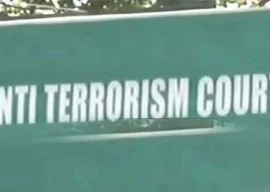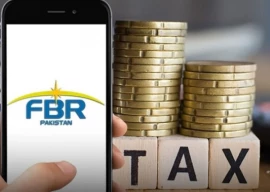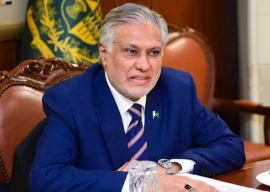
The court issued this order after proceedings on the petition, which have been under way for more than 16 months.
The bench, headed by Justice Mansoor Ali Shah, issued this order as the federal government had submitted that they imposed the ban under the orders of SC.
In response to this, the counsel for the petitioner, the non-governmental organisation (NGO) Bytes For All, submitted that the SC had only directed MoIT to block controversial video from YouTube, but the ministry blocked the website entirely.
The petitioner also submitted that any filtering and blocking on the internet is counterproductive and predatory.
In response, a deputy general submitted the claim that the meaning of the order given by the SC was to block YouTube, because there is no mechanism available in the country to only block the controversial video.
Due to an allegedly blasphemous video on YouTube titled the "Innocence of Muslims" the website was blocked by former prime minister Raja Pervez Ashraf on September 17, 2012.
In condemnation of the video, Youm-e-Ishq-e-Rasool (pbuh) [love of Prophet Muhammad (pbuh) Day] was observed throughout on the orders of the Government of Pakistan. The video caused furor in the country resulting in mass protests in which 20 people were killed and over 200 injured.
After hearing arguments from both sides, the bench ordered the petitioner to move the SC for clarification of its order under which the website is blocked.
“Half of the country has been frustrated just like you have been about the blockage of YouTube,” Justice Shah remarked after the counsel for the petitioner insisted on making a decision about the petition.
Justice Shah added that the SC had compelled them not to pass any order in this regard.
Salman Akhtar, a technical expert appointed by the court, submitted a report recommending that access to YouTube be restored in Pakistan with interstitial warning pages displayed before controversial material.
The expert said due to efforts of MoIT and Pakistan Telecommunication Authority (PTA), Google has flagged many instances of the video with warning pages.
These interstitial pages now warn the user that they are requesting objectionable content. However, because of the impossibility of creating a fully comprehensive list of all instances of the video, these warning pages cover only those instances that have been flagged by MoIT and PTA and those that have been appropriately marked by Google. There remains the possibility of unflagged instances that would not have this warning page.
Akhtar also said YouTube runs in two modes: http (open) and https (encrypted). In the open mode, PTA can easily block specific instances of the video. In the encrypted mode, blocking of the video is not possible since the specific video being requested by the user cannot be detected by intermediaries such as the PTA.
He added that the nature of YouTube ,and the internet in general, is such that there are essentially only two choices. The first include draconian solutions, for example barring all access to YouTube.
“We note that even these solutions are not complete since the video in question is accessible on sites other than YouTube”, he said.
The second option would be a partial solution, which attempts to limit access on a best effort basis, recognising that complete suppression will not be achieved. This approach also balances the social benefits of open access to the internet in general and YouTube in particular. “In our opinion, the only viable choice is the second choice where a best effort attempt is made to suppress the video,” Akhtar added.
The expert recommended that with the presence of the warning pages, users will need to deliberately choose to navigate to the video and then, as a second step, choose to ignore the Google warning. “We also strongly reiterate support for the democratic principle of allowing the citizens of Pakistan access to the internet both in open and encrypted modes,” the expert said.
The court adjourned the hearing as date in office till clarification of the SC orders.
The petitioner sought directions for the MoIT and the PTA to reopen the functioning of YouTube. He said taking away YouTube’s access is the modern equivalent of taking away a scholar’s pen. He prayed to the court to order restoration of access to YouTube in Pakistan.






1726054615-0/OpenAI-(2)1726054615-0-270x192.webp)











COMMENTS
Comments are moderated and generally will be posted if they are on-topic and not abusive.
For more information, please see our Comments FAQ